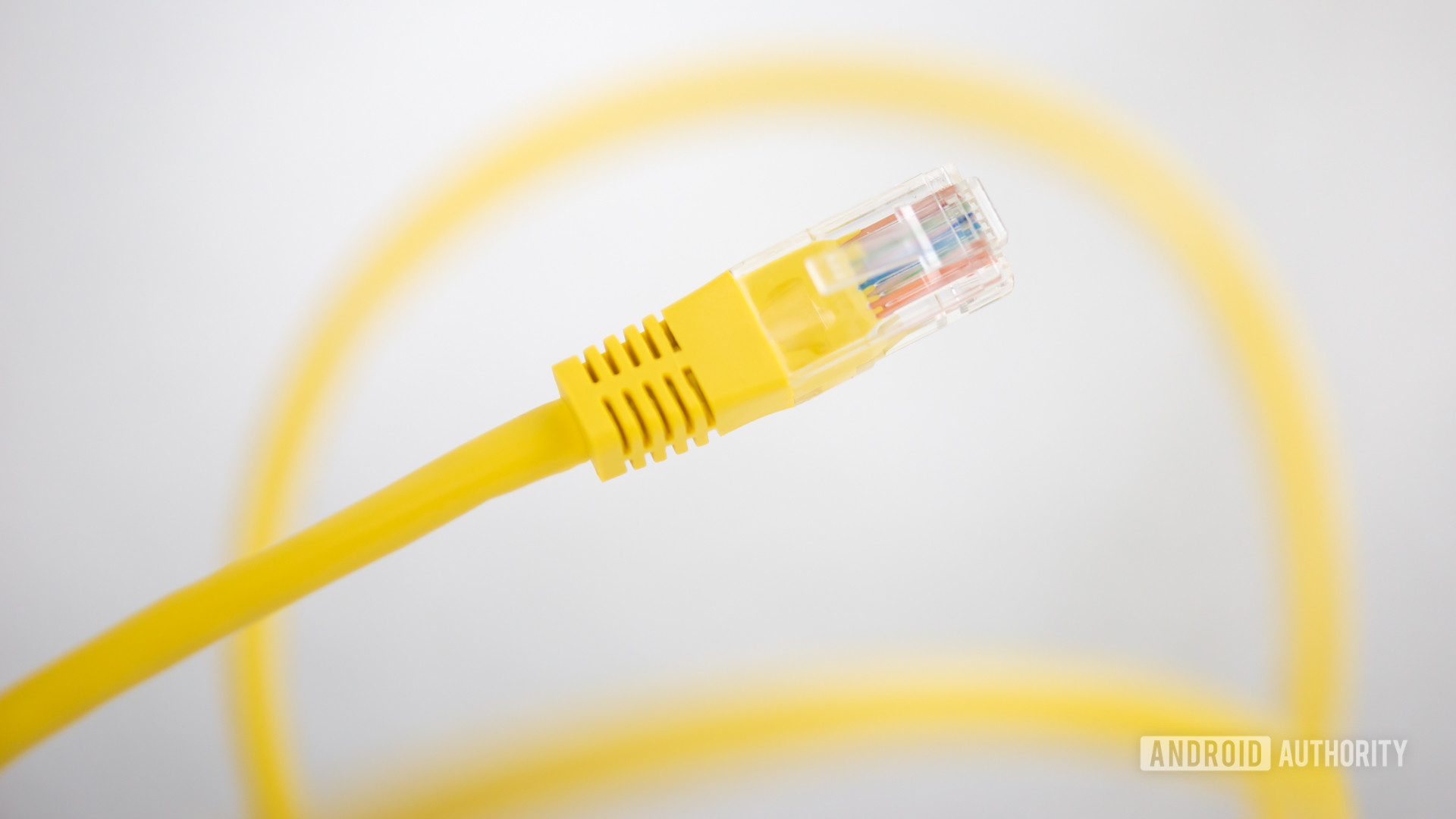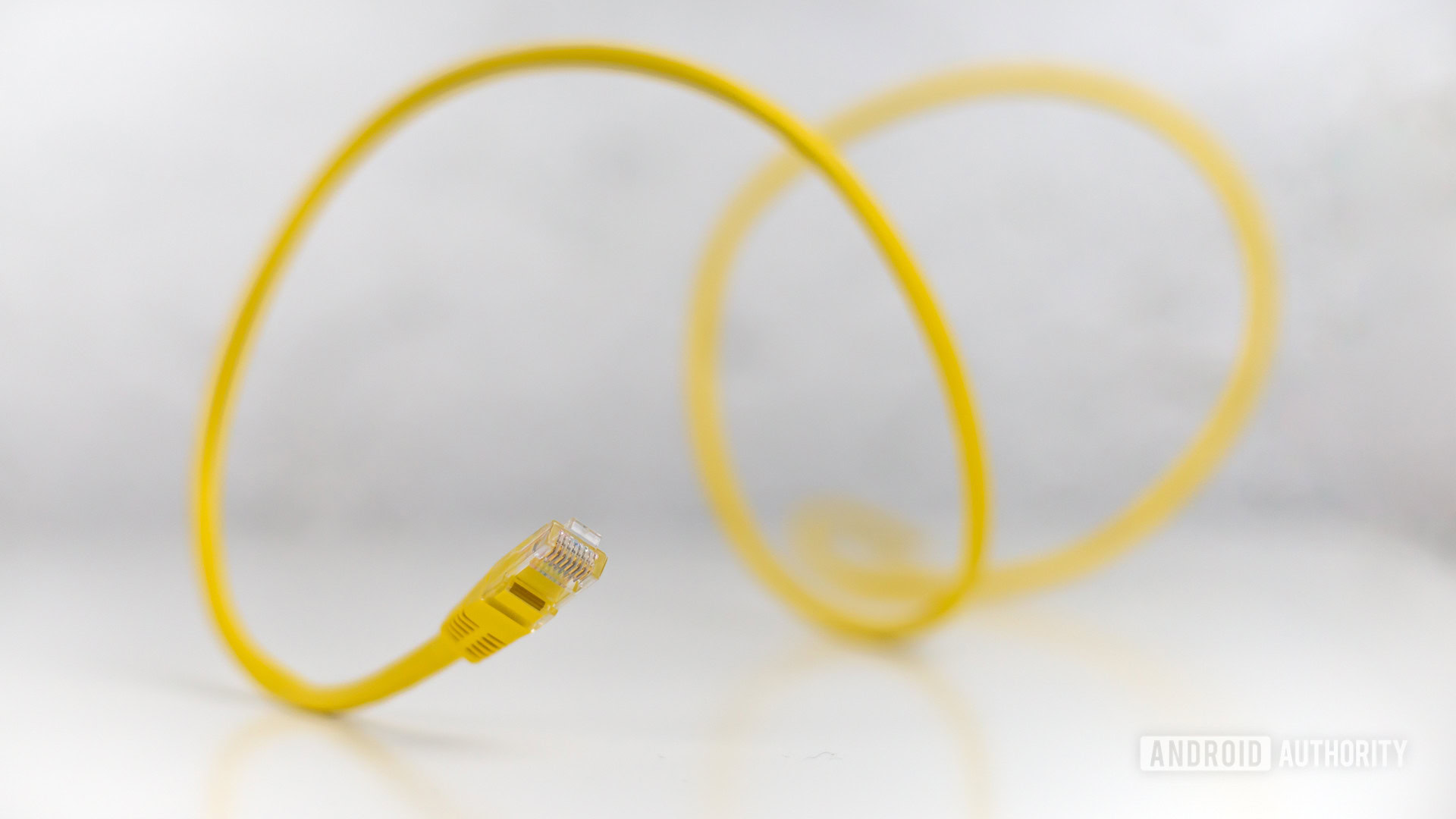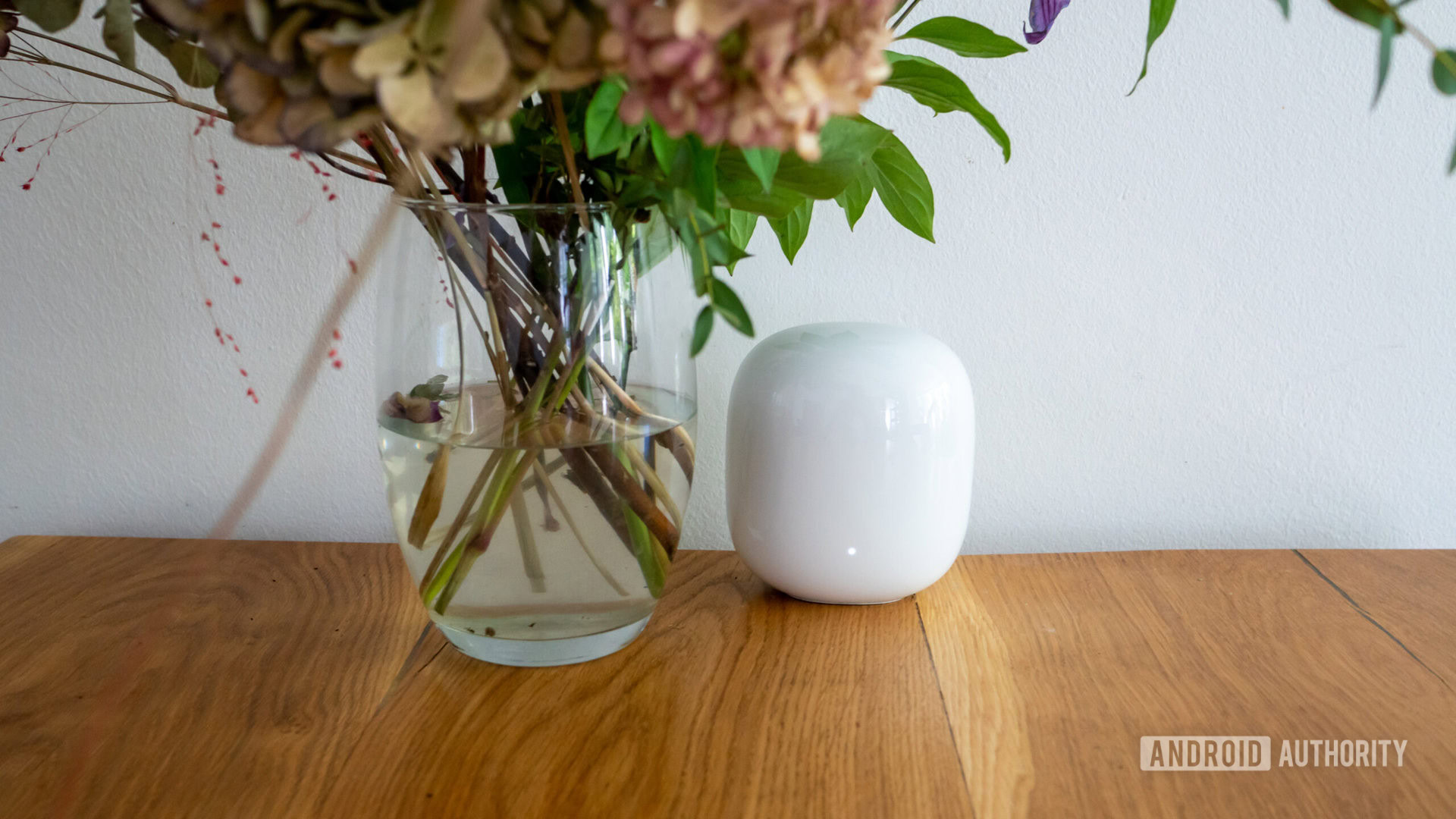Affiliate links on Android Authority may earn us a commission. Learn more.
Ethernet not working? Here's how to fix it

Using Wi-Fi is nice, but the truth is it doesn’t beat a good Ethernet connection. Ethernet provides much higher speeds, lower latency, improved stability, better security, and it can even transmit electricity. But, like all technology, Ethernet is not without its faults, and it can fail. Is your Ethernet not working? Let’s give you some troubleshooting tips to get you connected again in no time.
How to fix your Ethernet connection that’s not working
Editor’s note: We developed these instructions using a custom PC running Windows 11. Depending on your hardware and software, some steps and menus may look slightly different.
Is your Ethernet cable well connected?

Ethernet cables have a secure mechanism that clips on once fully inserted. This makes it hard for a cable to become loose, but sometimes these can move around, and pins can lose contact. And these cables get old with time, which can make this mechanism less efficient.
The first thing you should try when encountering issues with Ethernet not working is to ensure the cable is fully connected, both on the device and the modem or router. Just check both ends of the cable and make sure to plug them in securely. It’s always good to remove the cable from the ports and reinsert it, just as a safe measure.
If you’re using a dongle to connect to Ethernet, ensure the dongle is fully inserted into your computer’s port.
Once you do this, try connecting to the internet again. You may realize it was just a loose contact issue. Otherwise, move on to the next troubleshooting tip.
Check if the Ethernet cable works

If the Ethernet isn’t working due to a loose connection, it’s reasonable to assume there may be something wrong with the cable. Inspect the cable thoroughly and ensure there are no significant bends, rips, or other signs of obvious damage.
Also, inspect the tips, and see if there are any bent pins or loose wires in there. Sometimes, these can be corroded, which will also be a problem. Just keep in mind that a cable may malfunction even if it looks fine. The damage may be internal, or unnoticeable to the naked eye.
If you suspect the issue might be the cable’s integrity, your best bet is to try another cable, or try using your current cable with another device to see if it works. If you don’t have a spare, try to borrow one from a neighbor or friend. You can buy one for pretty cheap, too.
Restart the modem and router

If you’re connecting to the internet using an Ethernet cable, you’re hardwired to either a modem or a router. These can sometimes fail to work for no apparent reason, and a simple restart often gets everything back in place when Ethernet is not working.
Some modems and routers have a restart button. Press it, if you can find it. Others can be restarted from an app. If these are not options, unplug the device from its power source and wait for 30-60 seconds. Then, plug it back in.
Also, it might help to try and change the Ethernet port you’re using. Sometimes, these corrode or fail for several reasons.
Try a Wi-Fi connection
Have you considered the fact that the problem may be your internet connection? A simple way to test if this is the case is to connect to your Wi-Fi network, if possible. Or you could check if other devices connected to the network via Wi-Fi work as expected. If the Wi-Fi isn’t working either, you can assume the problem is with the internet connection.
We have a separate guide on what to do when your Wi-Fi isn’t working. Check it out for a dedicated set of troubleshooting tips.
Look for viruses

If you’re having issues with Ethernet not working, chances are you’re using a computer, and these are much more prone to viruses than mobile devices. Some viruses can attack your network connectivity, including the Ethernet.
It’s always a good idea to look into antivirus software for your PC. We like to recommend Microsoft Defender, Norton 360, or Avast. The software will instruct you what to do if your computer has a virus affecting your Ethernet performance.
Additionally, some say an antivirus or firewall can interfere with your Ethernet connection. You may want to try turning these off for a bit and see if that helps when you have issues with Ethernet not working. Just be careful, as removing these can leave you vulnerable.
Restart the computer or device
Sometimes, a simple restart can get everything back in working order. It’s one of the first troubleshooting tips you should try when anything isn’t working as expected. Reboot your computer and see if that helps when your Ethernet is not working.
How to restart a Windows computer:
- Click on the Windows button.
- Select the Power icon.
- Pick Restart.
Are you using a VPN?
If you’re using a VPN, there is a chance that’s what is affecting your connection. Virtual private network servers can go down, or get congested, in which case your internet connection can be affected. Try turning off your VPN and see if that helps.
How to turn off a VPN on Windows:
- Launch the Settings app.
- Go into the Network & internet tab.
- Click on VPN.
- Select Disconnect next to the VPN you want to turn off.
You might be using an app. If so, the VPN likely won’t show up in the settings. Click on the app tray and look for any VPN app option. Open the app and look for a button to disconnect your VPN connection.
Is your Ethernet enabled?
Ethernet is usually enabled by default, but there are exceptions. Not to mention, you may disable it accidentally. It’s best to make sure Ethernet is enabled and ready to use.
How to enable Ethernet on Windows:
- Right-click on the Windows button.
- Select Device Manager.
- Expand the Network adapters option
- Look for an Ethernet option. Realtek is a very common network card, so chances are that’s what you’ll have.
- If you see this option, or whichever network card your computer has, and it has an arrow pointing down, this means it’s off. Right-click on it.
- Select Enable device.
Reinstall the Ethernet drivers
There is also a possibility Ethernet is not working due to corrupt or outdated drivers. It’s a good idea to update or reinstall the drivers.
How to update your network card drivers:
- Right-click on the Windows button.
- Select Device Manager.
- Expand the Network adapters option
- Look for an Ethernet option. Realtek is a very common network card, so chances are that’s what you’ll have. Right-click on it.
- Select Update driver.
- Pick Search automatically for drivers.
- The system will let you know if there are available updates and give you instructions to install them.
How to reinstall your network card drivers:
- Right-click on the Windows button.
- Select Device Manager.
- Expand the Network adapters option
- Look for an Ethernet option. Realtek is a very common network card, so chances are that’s what you’ll have. Right-click on it.
- Select Uninstall device.
- Confirm by hitting Uninstall.
- Restart the computer.
Reset your network settings
Are you still having issues with your Ethernet not working? It’s time to take out the bigger guns. Maybe you should reset your network settings. This will bring your network settings back to default. It will delete any extra settings, so you may need to reinstall things like VPNs and other network tools.
How to reset your network settings on Windows:
- Launch the Settings app.
- Go into the Network & internet tab.
- Select the Advanced network settings option.
- Hit Network reset.
- Click on the Reset now button.
- Confirm by selecting Yes.
FAQs
It depends on what type of Ethernet cable you use. Generally speaking, though, Ethernet can be much faster than Wi-Fi.
Gigabit Ethernet refers to Ethernet connections that can reach 1Gbps speeds. These are still considered really fast connections and are usually as good as you can get without upgrading to enterprise solutions.
Technically speaking, there is no limit to how long Ethernet cables can be. That said, performance does degrade as Ethernet cables get longer. Cable speeds are usually tested at 100 meters. This means you can have a 100-meter Ethernet cable and still reach the advertised performance. It’s said that going above that will result in degraded performance.
If the problem isn’t with your router, modem, cable, or computer settings, there is not much else you can do to fix the issue yourself. Chances are you have a faulty Ethernet port in your device. Your best bet is to look into your warranty or insurance, to see if the manufacturer or insurance provider can fix the device for you. If your device is not covered by either, you might need to pay to get it fixed.